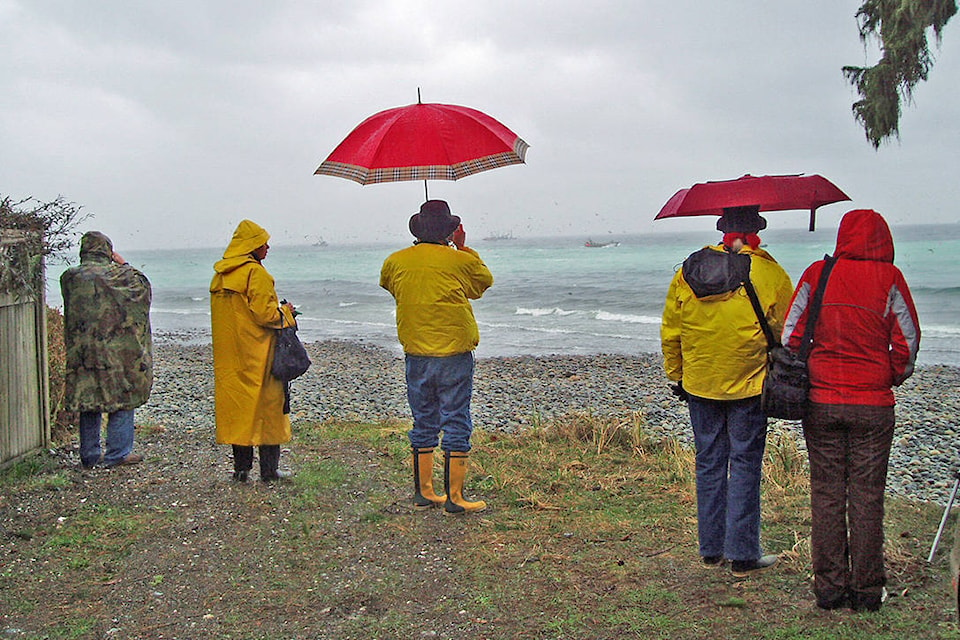BY SANDY MCRUER
Special to the News
The Christmas Bird Count, held three days after Christmas 2019 in Port Alberni, was well-attended but the results were underwhelming. Mostly it was due to rain.
When our group met at 8 a.m. it was not raining. We headed off to the Somass Estuary, walking in from the gate along the access road to the effluent ponds. I was pleased that the rain has not started, and wanted it to hold off as long as possible. But by 10:30 a.m., precipitation had started.
Birding in the rain is a challenge. At first you and your optics are dry and it isn’t too bad. But as the rain continues, things deteriorate. Decent binoculars these days come with easily removable eye caps attached to the straps so you don’t lose them. So you can put them over the eyepieces to shield them from the rain. But as the day wears on, water gradually seeps through. Good binoculars are waterproof, so damage to them is unlikely. But inevitably you need to wipe the moisture from the lenses. But your hands are wet, and so the lens cloth or Kleenex gets wet and then it is useless. The same with a spotting scope.
On the other hand we were wearing full raingear and boots. We stayed relatively dry.
READ: Helping with Christmas bird count is ‘citizen science’
Another thing happens with the birds when it rains: they all seek shelter. Well, all the little woodland birds and sparrows. Ducks have nowhere to go, so they sit on ponds with their heads tucked in.
We intended to be finished our area around 3:30 or 4 p.m. But because there was little to see or hear, we didn’t stop much. So we were done by 2 p.m. Other crews in different areas had also packed it in early.
So the bird numbers were much lower than usual, and so was the number of species. Normally the counts range from 7,000 to 12,000. This year it is around 4,600. And the species count was 78 on the day with eight more identified during the three days each side of the day (considered “count week”).
Many thanks to the 18 intrepid souls who braved the rain. Thank goodness there was no wind as well. Three volunteer birders were from out of town, two of whom came from Ucluelet and one was staying with family but lives in the United States.
An important part of the count are the feeder counters. This year there were 23 of them. They get the easy job! But feeder counters often find birds we don’t always see in the field. One found the only Ring-necked Pheasants on the count.
Some interesting trends are that we saw fewer robins, kildeer, and crossbills than usual. But we saw lots of bald eagles, brown creepers and owls, but no Barred owls, just Great Horned.
After the day’s activities, everyone was invited to the Golden Dragon Restaurant for a get-together. Here we traditionally catch up on the day and tell stories about how things went. We also go through the checklist of all the birds possible to get a preliminary species count.
The story I got to tell this year was of a Peregrine falcon taking a duck out of mid-air and flying off with it for lunch.
